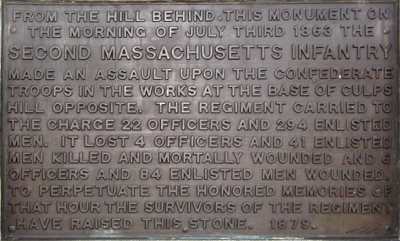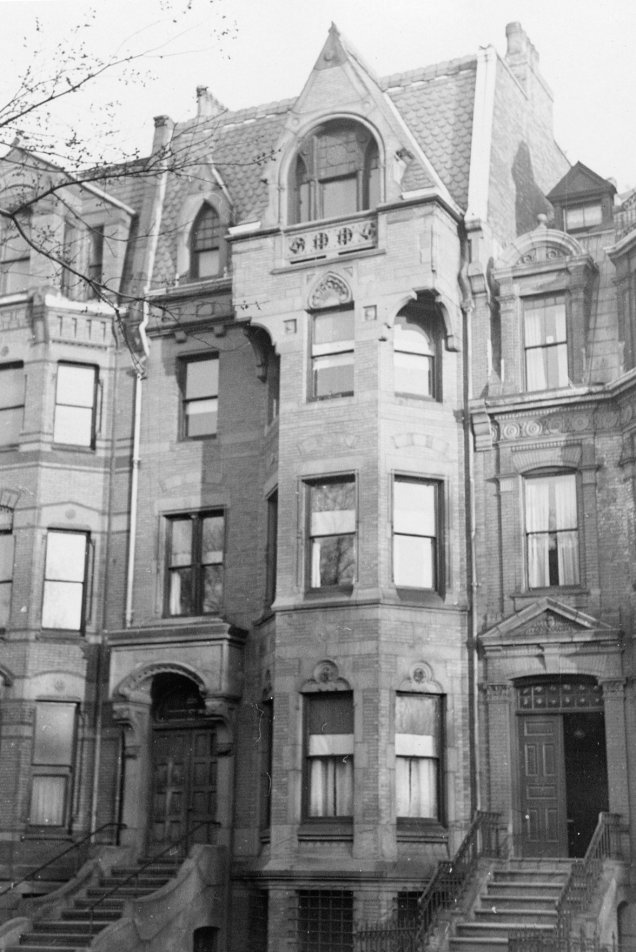Provoked by the foregoing research, I went to Gettysburg to look for the place, the actual place, where Colonel Mudge was killed: Spangler’s Spring, located near the foot of Culp’s Hill, at the tip of the Union “fish hook. ”
Google Map (GPS coordinates: 39.813324° N, 77.215871° W):
If you are reading this at Gettysburg, and currently searching a paper map, it is stop number 13 on the auto tour.]
Coming out of the woods on to a straight part of the road, with a large meadow on the right and a smaller one farther down on the left, your eye moves up across a long hill to a wall of woods. Just off to the left, and easy to miss, is a smallish rectangular stone monument fitted with a bronze plaque. It rests on a large slab of granite that was probably dumped as glacial till.

This is the memorial to the 2nd Mass. Volunteers, and, dedicated in 1879 by the survivors, it was the first such memorial to be placed on the battlefield at Gettysburg. The two faces of the plaque appear as follows:

“From the hill behind this monument on the morning of July Third 1863 the Second Massachusetts Infantry made an assault upon the Confederate troops in the works at the base of Culp’s Hill opposite. The regiment carried to the charge 22 officers and 294 enlisted men. It lost 4 officers and 41 enlisted men killed and mortally wounded and 6 officers and 84 enlisted men wounded. To perpetuate the honored memories of that hour the survivors of the Regiment have raised this stone. 1879.”

“Lieut. Col. Charles R. Mudge Captain Thomas B. Robeson
Captain Thomas B. Fox Lieut. Henry V.D. Stone
—-
Color bearers – Leavitt C. Durgin, Rupert J. Sadler, Stephen Cody
First Sergeant Alonzo J. Babcock, Sergeant William H. Blunt.
–Corporals–
Charles Burdett, Theodore S. Butters, Jeremiah S. Hall, Patrick Heoy, Ruel Whittier, Gordon S. Wilson.
–Privates–
Samuel T. Alton James T. Edmunds Charles Kiernan
George M. Baily William H. Ela William Marshall
Henry C. Ball John E. Farrington Frederick Maynard
Wallace Bascom Silas P. Foster Andrew Nelson
John Briggs, Jr. Willard Foster Rufus A. Parker
David B. Brown Joseph Furber Philo H. Peck
William T. Bullard Fritz Goetz Sidney S. Prouty
James A. Chase Daniel A. Hatch Richard Seavers
Peter Conlan John J. Jewett Charles Trayner
John Derr John Joy David L. Wade”
Above: the front and back of the monument to the 2nd. Mass Volunteers, and their respective inscriptions.
Just in front of the stone, you see a gray, withered tree stump, maybe a foot-and-a-half across and coated in dust from the road. It stands up from the base of the huge boulder, almost pointing towards the hill. Its brush with the saw occurred long ago, but somehow it has held on.
Continue reading →























































